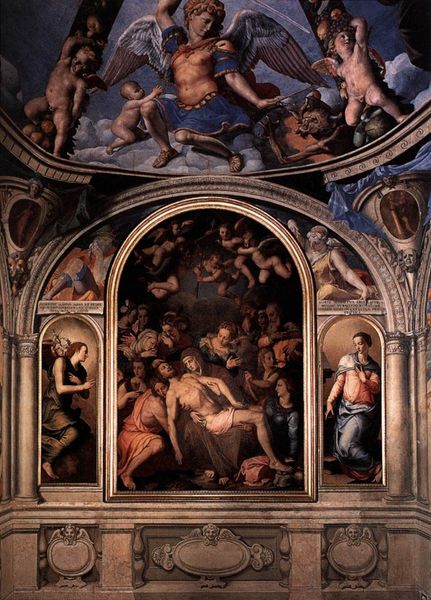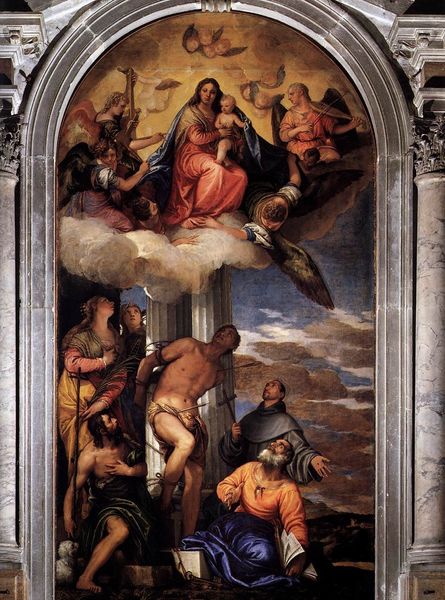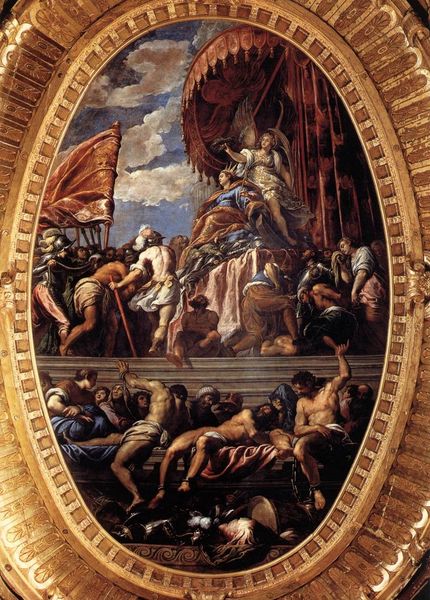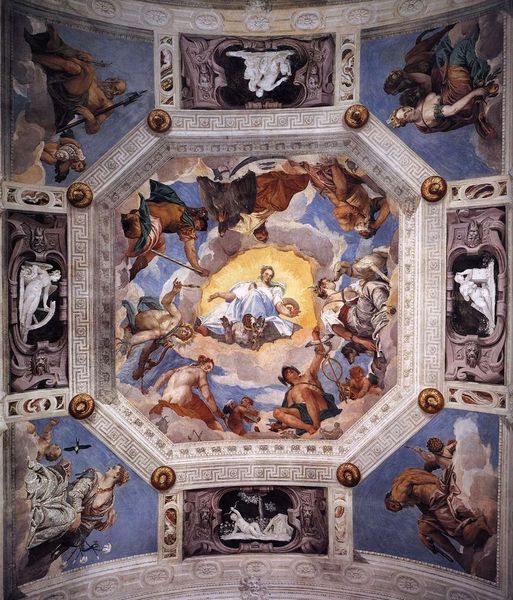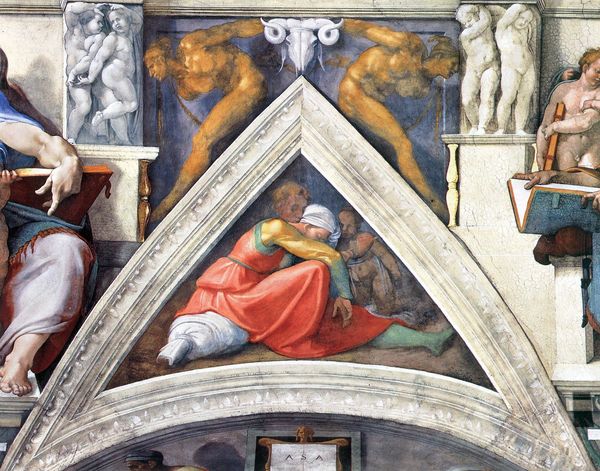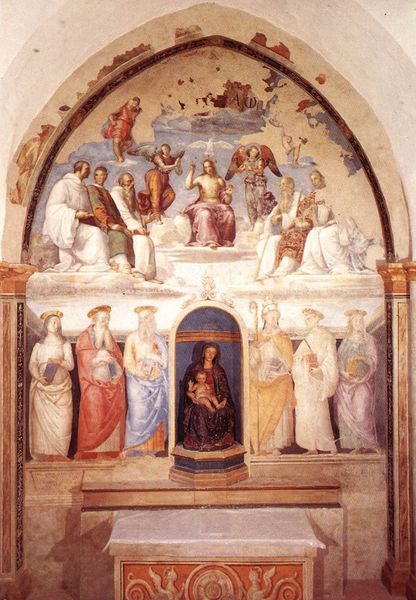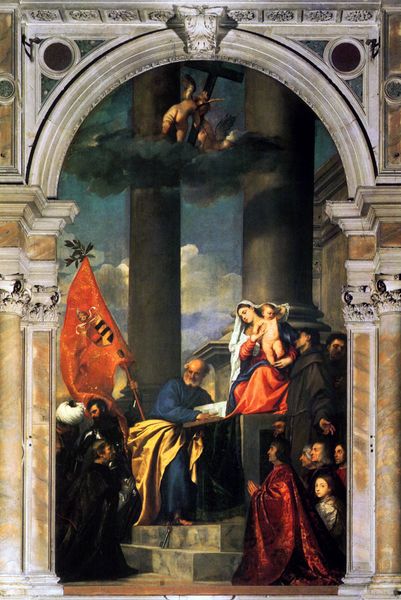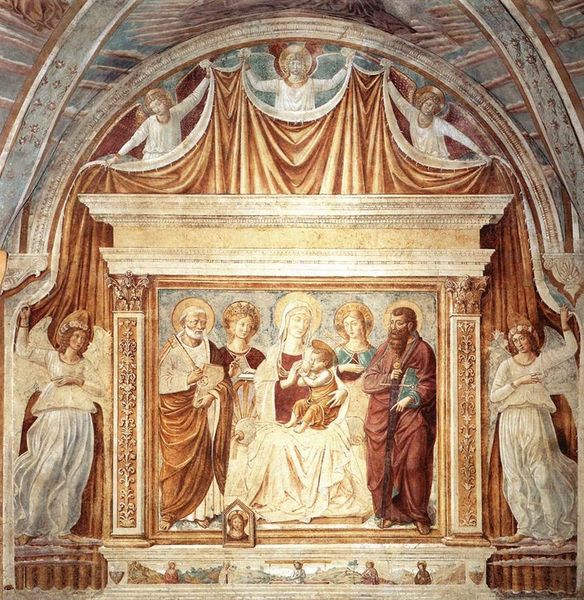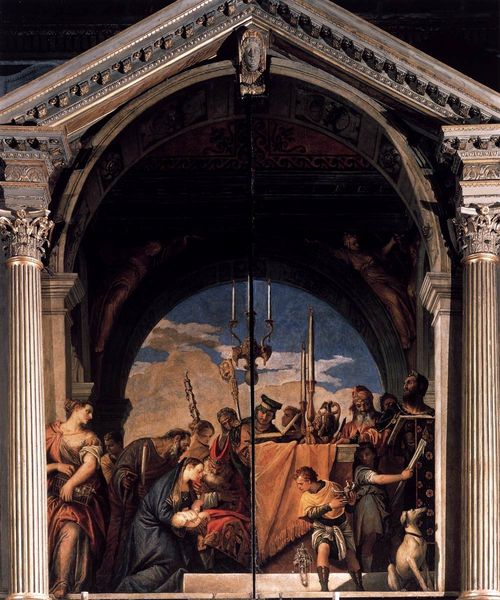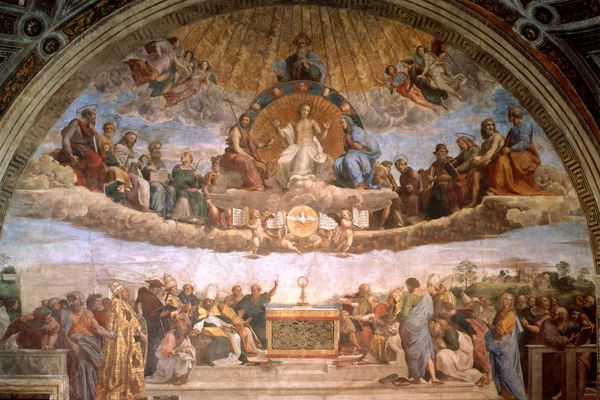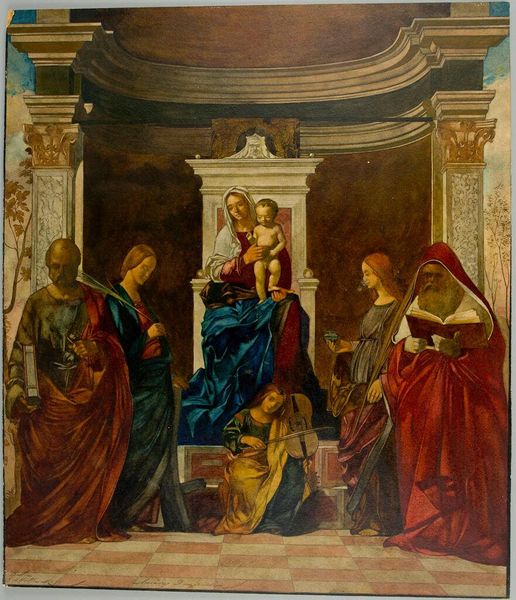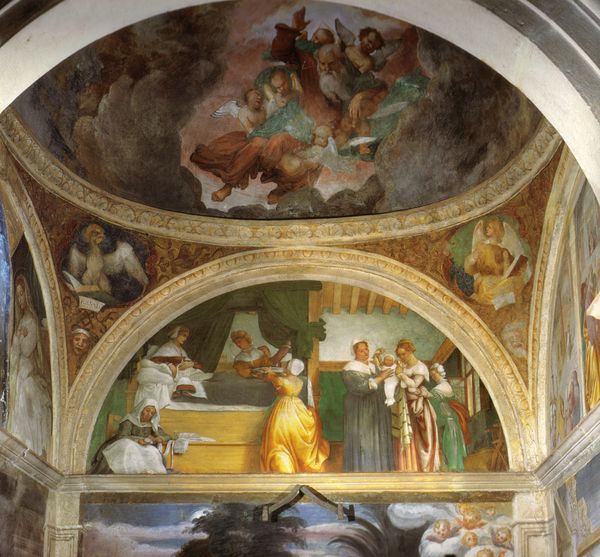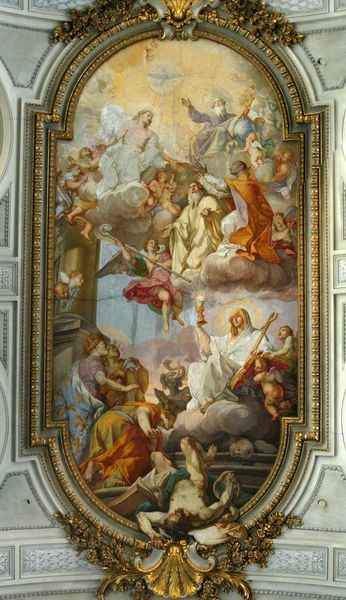
painting, oil-paint, photography
#
portrait
#
venetian-painting
#
narrative-art
#
painting
#
oil-paint
#
sculpture
#
landscape
#
holy-places
#
figuration
#
photography
#
jesus-christ
#
chiaroscuro
#
christianity
#
genre-painting
#
history-painting
#
italian-renaissance
#
angel
#
christ
Dimensions: 555 x 260 cm
Copyright: Public domain
Editor: This is Paolo Veronese's "Transfiguration of Christ," painted in 1556. It's oil on canvas, and the way the composition is split between the heavenly and earthly realms really strikes me. What do you see in this piece, especially regarding its iconography? Curator: The "Transfiguration" is a loaded image, isn’t it? Notice the division: Christ, Moses, and Elijah float amidst divine light, echoed by cherubic forms. This arrangement holds a clear symbolism – it evokes cultural memory. Veronese places figures above a chaotic scene with terrified disciples. Do you think Veronese captures the human terror and divine certainty within a single work? Editor: Definitely, there’s such a contrast. The figures below seem lost, while Christ appears so serene and bright. How much does the context of Venetian painting influence this portrayal? Curator: Immensely! Venetian art often employs rich colors and dramatic compositions. Notice how Veronese uses color not only to depict the scene but also to convey emotion and spiritual power. Consider the vibrant blues and golds against the earthly tones below. Do these choices lead you to certain feelings, connections perhaps? Editor: The colors definitely enhance the otherworldliness. The bright hues used on Christ and the prophets contrast so strongly with the darker, muddier tones of the figures below. Curator: Precisely! And beyond aesthetics, the choice of depicting recognizable biblical figures establishes a continuum. Moses, representing the law, Elijah, the prophets – their presence signifies a validation, a lineage, adding layers of meaning. What impact would a visual narrative like this have on 16th-century viewers familiar with the religious story? Editor: I think seeing this dramatic and symbolic presentation of the story would reinforce their beliefs and offer a powerful visual connection to their faith. I see the piece very differently now. Thank you! Curator: Indeed! Understanding art isn't merely about seeing but also about decoding the layers of symbolism and history embedded within. A single artwork is often the culmination of historical narratives, aesthetics and symbolism combined.
Comments
No comments
Be the first to comment and join the conversation on the ultimate creative platform.
